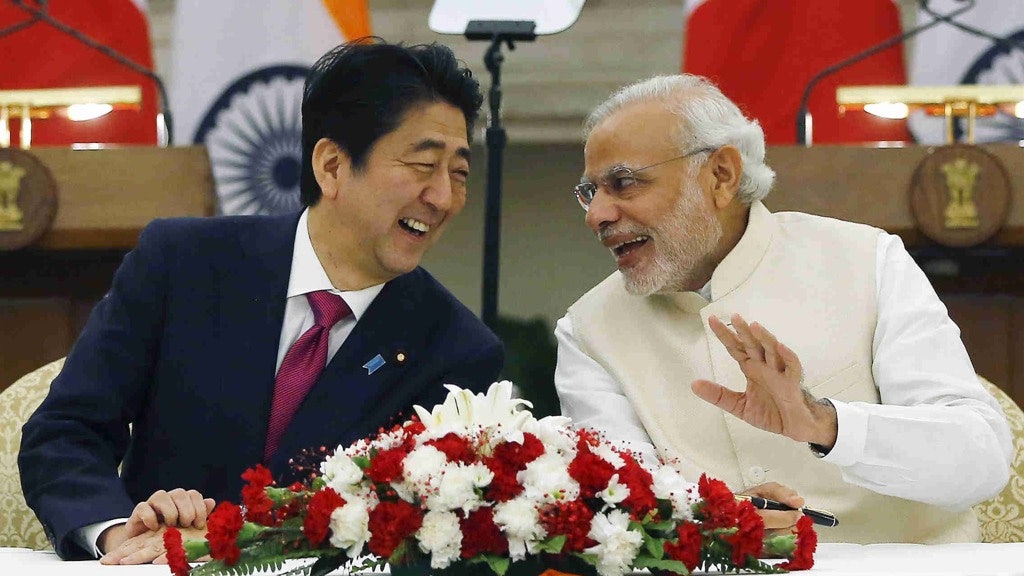Around December 2, local time, Japan and India’s first “2 + 2” talks with foreign ministers and defense ministers are still attracting media attention. Compared with conventional topics such as “inter-munition interoperability, joint training, and equipment research and development” between Japan and India, the latest position between the two countries on the issue of the “Regional Comprehensive Economic Partnership Agreement” (ie, RCEP) deserves more attention.
Around November 28, representatives of the Ministry of Economy, Trade and Industry of Japan, the Ministry of Foreign Affairs of Japan and other institutions expressed their intentions that “Japan will not consider RCEP signed without India.” This was emphasized in the interview.
Compared with Japan ’s attitude of pushing for the full signing of the RCEP at all costs during the ASEAN summit a month ago, Japan ’s statement surprised all countries. Some authoritative financial media, including Bloomberg and Reuters, also regarded it as a signal of “Japan abstaining” and “balancing China .”
India’s previous RCEP signing and setbacks have a reason: the high trade deficit between China and India is the biggest obstacle to further progress of RCEP. In early November, there was a view that India might ask China for a final ransom on the issue of the RCEP agreement to ensure that New Delhi’s accession to the Union will not be damaged. When the needs of New Delhi could not be met immediately, the Narenda Modi authorities confirmed the willingness to “do not join” on November 4.
In this way, when Japan also made similar remarks one month later, a question also emerged: Does Japan also participate in the blackmail of India and intend to withdraw from RCEP? the answer is negative.
Also on December 1, Tokyo ’s attitude has undergone a major change after 72 hours: Atsushi Haibe pointed out at another press conference that Japan is still pushing India to join RCEP as soon as possible . Trying to work with other countries to alleviate New Delhi’s concerns.
Therefore, the outside world can confirm that Japan ’s positive attitude on the RCEP issue has not changed, which is in line with Japan ’s attempt to persuade China to reduce India ’s import tariffs in October. While RCEP-related countries are becoming impatient with India, Tokyo remains patient due to India’s potentially huge market.
According to the analysis, when “Abenomics” has been implemented for many years but lacks market space, Japan hopes to use the multilateral framework formed by RCEP to open the Indian market, thereby serving Japanese companies that have invested in India in recent years.
With a population of more than one billion, India is a huge potential consumer market, and its business interests in Japan are self-evident. However, in the face of protracted negotiations with India and India’s erratic persistence on issues such as trade protection, Japanese political and financial circles are no less pressured than China. Just considering that the Japan-India 2 + 2 summit is about to be held and that Japanese Prime Minister Shinzo Abe will visit New Delhi around December 15th, Tokyo will have to make some gestures to please India.
In fact, looking around the RCEP-related negotiations after the ASEAN Summit, China and Japan can find India’s growing appetite.
Compared to the requirements of India ’s request for a tax exemption and anti-dumping trigger mechanism from China (that is, if a certain type of goods suddenly enters the Indian market and constitutes dumping, India has the right to temporarily increase tariffs on goods from that country) and other requirements. Recently, a new clause has been added: In addition to the additional “anti-dumping trigger mechanism” for industrial products and agricultural products, the Indian side not only requires that the country’s home appliances, food and other commodities must include 30% of “Made in India” parts or materials. RCEP is even required to “establish joint control measures” to prevent other member states from “dumping” India. This situation means that the other 15 countries of the RCEP will continue their difficult confrontation with New Delhi.
However, the prospects brought by the RCEP still prompted many countries to try their best to swallow their voices and try to pull India into it. Some analysts believe that once RCEP is established as the world’s largest free trade zone, all products between the 16 countries will achieve zero tariffs. This result will boost China’s GDP by 0.55% and Japan’s GDP by 0.09%, and China’s total exports will also increase. Increased by 3.15%.
At this point, Beijing will naturally emphasize that “the door of RCEP is always open to India”, and Tokyo will make some more surprising statements.












